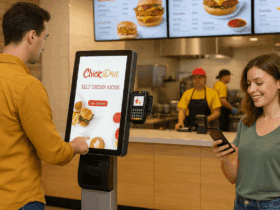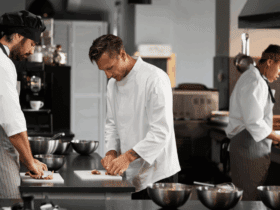Restaurants operate on razor-thin profit margins. Hence, they need to know how to reduce restaurant costs. High food and running costs can be financially devastating. In order to succeed, you need to find that sweet spot between lowering your restaurant’s expenses and providing a fantastic dining experience. In reality, it need not be so uncertain. You need to take a close look at spending patterns, figure out your priorities and put in place a few practical measures.
Here are five effective steps that are easy to implement.
1. Be consistent with measurements:
Each chef works differently. Some will follow a recipe to make tea by measuring out ingredients, while others will use their eyes and hands to figure out the amounts needed. These different approaches will cause the cost of a dish to fluctuate, posing a challenge for your restaurant to stay within its budget. Provide portion cups and measuring spoons and ensure that all your chefs stick to specific measurements.
2. Find suitable alternatives for expensive ingredients:
There are some ingredients where the brand does not really matter. Regardless of what you might select, the taste will remain the same. Butter and sugar are two such things that come to mind. Make a list of all your pricey ingredients and consider which of these can be switched to a cheaper option without seriously impacting the flavor of the food. Make the swap and the price of those items is sure to go down thereby helping to reduce restaurant costs.
Must Read: Why Every Restaurant Needs a QR Code Menu
3. Utilize slow-moving ingredients for daily specials:
Daily specials are a great way to make use of those ingredients that have been in the refrigerator or pantry for a while. Create dishes and add them to your list of daily specials. Promote these items by displaying the specials list prominently. Get your wait staff to subtly encourage customers to try these dishes so that you can use up the ingredients, minimize waste, and earn some money.
4. Adopt technology:
69% of restaurants use multiple technologies. By incorporating technology as a part of front-of-house and back-end functionalities, you can streamline activities and facilitate more efficient operations. Perhaps more importantly, by automating some tasks you can manage with a smaller staff base thereby saving on labor costs. Digitization will also allow you to effectively manage the peak time rush. Thus, processing more orders, earning more revenue, and reducing restaurant costs.
5. Lower your utilities usage:
If you are not careful, you can rack up overpriced utility bills and this will simply add to your restaurant’s running costs.
- Keep your power and water usage under control and try to reduce consumption when possible.
- Start by switching to LED light bulbs which are bright and cost-effective.
- When buying new appliances, invest in energy-efficient models.
- Run your dishwasher only on a full load. Install low-flow taps.
- Optimize your air conditioner by setting it to the temperature best suited to the size and layout of your establishment.
These measures are very simple to implement but will almost immediately lower your restaurant costs.
In summary, the term ‘cutting costs’ has got some pretty bad press over the years. The truth is that you can cut costs without compromising on the quality of your food or service. Besides, at a time when price matters, you should do what you can to bring down your expenses. You just need to be sensible about how you do it.










Leave a Reply